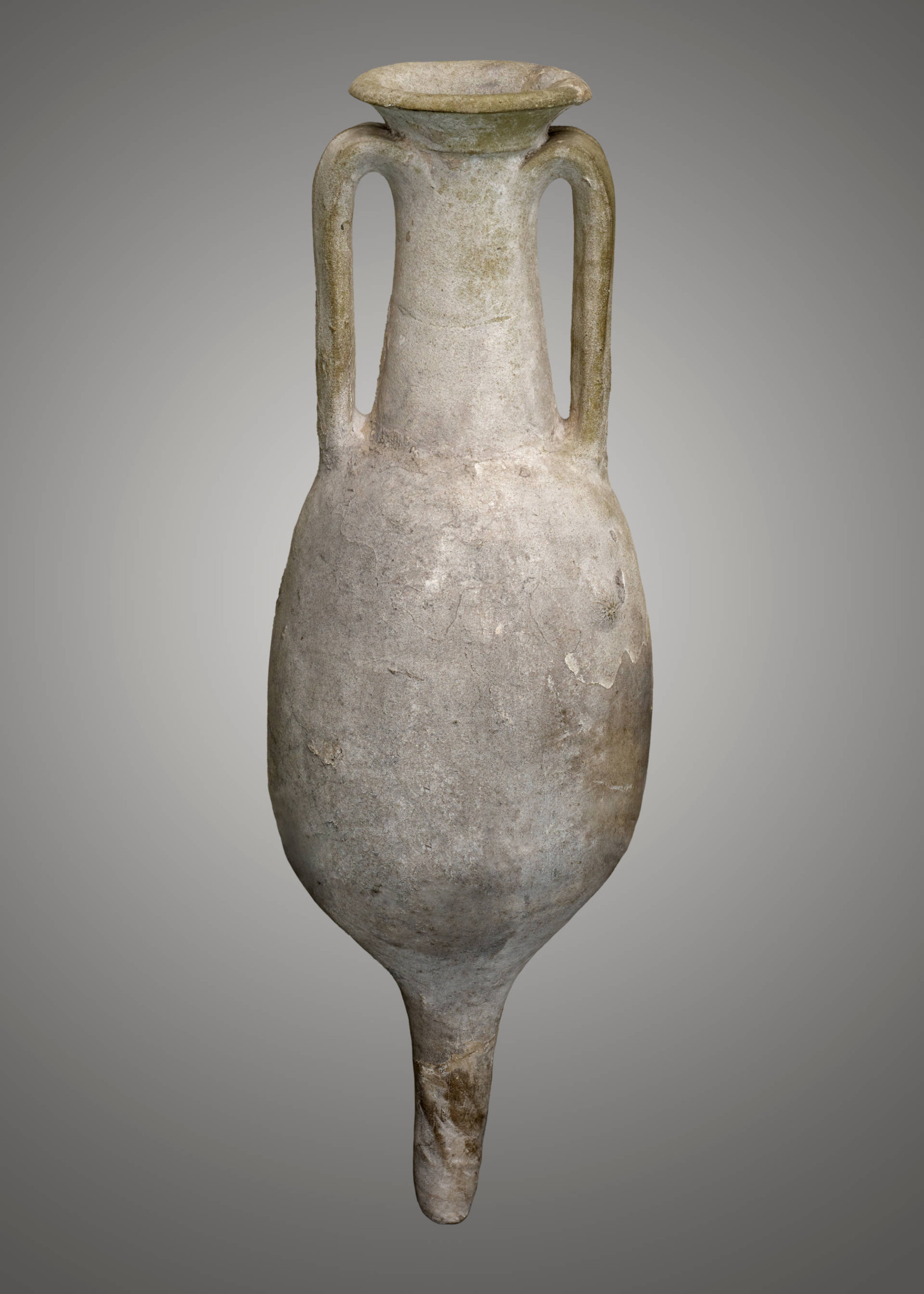
in മലയാളം / Malayalam translated by Divya
This object has been translated into 5 different languages by 5 different users
ഈ റോമൻ ആംഫോറയ്ക്ക് (ഇരുവശത്തും പിടികളുള്ള വലിയ മൺപാത്രം) ഏകദേശം 2000 വർഷം പഴക്കമുണ്ട്. സ്പെയിനിലെ കാഡിസിലാണ് ഇത് ആദ്യം കണ്ടെത്തിയത്. ഇത്തരത്തിലുള്ള സംഭരണ പാത്രത്തിന്റെ പൂർണ്ണമായ ഉദാഹരണമായി ഇത് വീണ്ടും മ്യൂസിയത്തിലേക്ക് കൊണ്ടുവന്നിരിക്കുന്നു. അടിഭാഗത്തിന്റെ കൂർത്ത ആകൃതി കാരണം അടുക്കി വയ്ക്കുമ്പോൾ അവ സുരക്ഷിതമായി ഇരിക്കും. മാഞ്ചസ്റ്ററിലെ ഖനനത്തിൽ കണ്ടെത്തിയ തകർന്ന കഷണങ്ങളുമായി ഇതിനെ താരതമ്യം ചെയ്യുന്നത് ഉപയോഗപ്രദമായിരുന്നു. ഇവ കളിമണ്ണ് കൊണ്ട് നിർമ്മിച്ചതിനാൽ, അവ ഉപയോഗിക്കാനും നീക്കംചെയ്യാനും എളുപ്പമായിരുന്നു.
ഏതൊക്കെ വസ്തുക്കളാണ് നിങ്ങൾ ഉപയോഗിക്കുകയും വലിച്ചെറിയുകയും ചെയ്യുന്നത്, ഏതൊക്കെ വസ്തുക്കളാണ് നിങ്ങൾ വീണ്ടും വീണ്ടും ഉപയോഗിക്കുന്നത്?
This is an object from the Manchester Museum collection translated from English to the Indian language Malayalam.
Malayalam is a Dravidian language spoken very commonly in the Southern state of India called Kerala along with Indian territories Lakshadweep and Mahé, Puducherry.
Manchester has a vibrant Malayali community and a Manchester Malayalee association comprising of people from all age groups. This signifies the importance of having a translation in Malayalam of the museum objects thereby making the museum experience more welcoming, inclusive and wholesome.
ReportDo you have something you’d like to say, in your own language or English, about the object or translation? We’d like to hear what you think.
Translations are community-sourced and for anyone to participate in, however you use your language. For more information, see Community Guidelines.
27 Jun, 2023
Notes on culture
In Rome, there is a port on the river Tiber called Emporio. This port has been used since ancient Roman times and it was particularly useful to receive goods and materials that arrived by sea from the port of Ostia and sailed up the Tiber.
Over the centuries the amphora shards, which were used to hold grain and liquid foodstuffs during transport, accumulated in a mound. This mound became so substantial in size to be awarded the name “Monte dei cocci” (“Mound of shards”).
Today, this mound is commonly known as Monte Testaccio. It is surprising for tourists and Romans to know that the famous Testaccio in fact an artificial hill formed by shards and various debris.
Nowadays, Testaccio is one of the most popular neighbourhoods in Rome. It is one of the cultural centres of the Eternal city but, throughout the centuries, it always managed to maintain its genuine and familiar spirit as Rome’s working-class district.